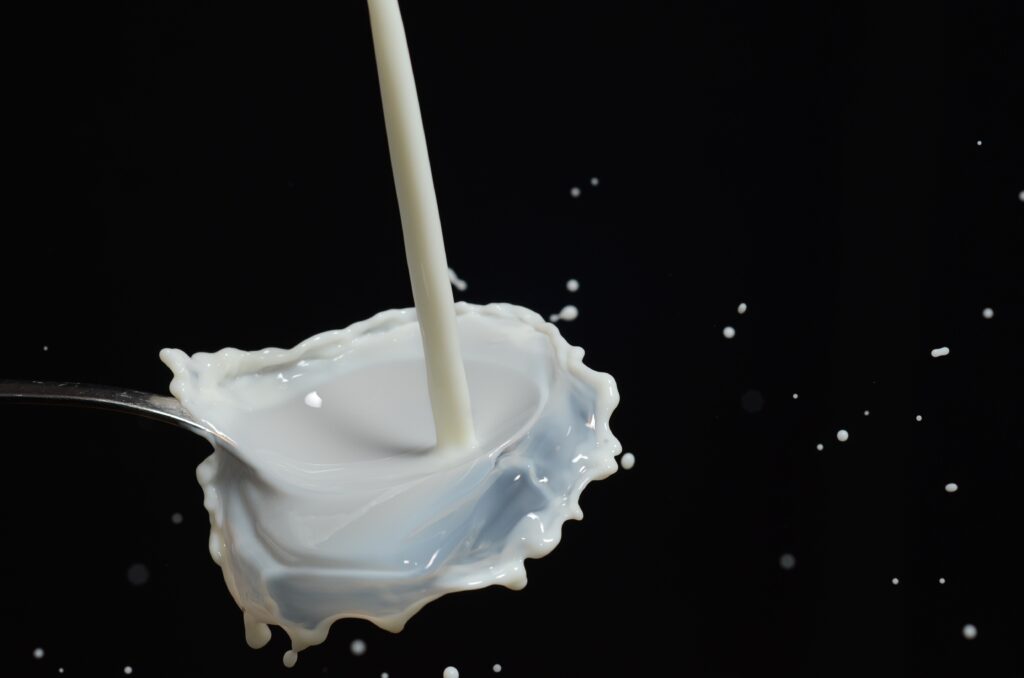Galactorrhea may be a mouthful to pronounce, but it’s a condition that everyone needs to hear about. It is a disorder whereby the nipples secrete milk or a whitish, milk-like substance from the breasts. The strange part about it is the fact that it may affect women who have not gotten pregnant or given birth before. This means that galactorrhea is a milky discharge from the breast in people who are neither breastfeeding nor pregnant. It can also occur in women who have stopped breastfeeding for over six months but still experience the milky discharge from their breasts.
This milky secretion can happen on its own, that is, spontaneously or when the breast is pressed. It can also affect both breasts or just one breast, and it may happen only for a while or continue for a long time.
What Causes Galactorrhea?
A variety of factors can cause galactorrhea:
- Hyperprolactinemia: Prolactin is a hormone that helps to develop breast tissue and supervises milk production and lactation, among other functions. The pituitary gland majorly secretes prolactin. Hyperprolactinemia occurs when there are higher-than-normal levels of prolactin in the blood. One of the most common causes of hyperprolactinemia is prolactinoma, a non-cancerous tumour that forms in the pituitary gland.
- Hormonal fluctuations in puberty and menopause can cause galactorrhea.
- Constant nipple stimulation associated with sexual activity or self-breast examination can also be a cause.
- Certain medications, like those used to treat schizophrenia, a mental disorder, can also cause it. Some oral contraceptives can also be a possible cause.
- Other conditions, such as thyroid disorders, chronic kidney failure, and hypothalamic lesions, may also cause it.
- Idiopathic galactorrhea occurs when there is no identified cause, even after undergoing the appropriate physical and laboratory examinations.
- Trauma or injury to the spinal cord and injury to the chest wall can cause an increase in prolactin, which can lead to galactorrhea.
- Some herbal supplements like fennel or fenugreek may also cause it.
Who Can Experience This Condition?
It is a relatively common condition. Studies have shown that about 20-25% of women will experience galactorrhea in their lifetime. Surprisingly, it can also affect men, children, and newborn babies.

What are The Symptoms of Galactorrhea?
The hallmark of this condition is the persistent discharge of milky or whitish substance from the breast, which may occur on its own or only when the nipple is expressed. It is usually painless.

Other associated symptoms are :
- Irregular or absent menstrual periods
- Headaches or problems with the vision
- Loss of appetite
- Infertility
- Excessive urination
- Vaginal dryness
- Erectile dysfunction
- Acne
The type of symptoms that occur alongside galactorrhea may be a good pointer as to its root cause.
Is Galactorrhea Life-Threatening?
Galactorrhea is generally not a life-threatening condition, but proper investigation should be done to ascertain the underlying cause. If you’re experiencing this, you should see a doctor immediately.
You can also learn more about the types of breast lumps and which ones are a cause for concern.
Is There Treatment for This Condition?
Yes, there is. It is important to note that treatment depends on the cause of the condition. This means that it may not stop until the underlying cause is treated.
Placing absorbent pads in the bra can help to prevent staining of the bra or clothes.
Sometimes, it may stop by itself.
Do you have any other questions or inquiries? Feel free to drop a comment, and I promise to reply!
Kindly subscribe to this newsletter for more helpful health tips
Till my next post,











I appreciate the clarity and thoughtfulness you bring to this topic.
There are some interesting closing dates on this article however I don’t know if I see all of them heart to heart. There’s some validity but I will take hold opinion till I look into it further. Good article , thanks and we want extra! Added to FeedBurner as properly
I like reading through and I conceive this website got some really useful stuff on it! .
Simply want to say your article is as astounding. The clearness for your submit is just nice and that i could think you are an expert in this subject. Well along with your permission let me to take hold of your feed to keep up to date with approaching post. Thanks one million and please keep up the rewarding work.
Nice post. I learn something more challenging on different blogs everyday. It will always be stimulating to read content from other writers and practice a little something from their store. I’d prefer to use some with the content on my blog whether you don’t mind. Natually I’ll give you a link on your web blog. Thanks for sharing.
Some truly rattling work on behalf of the owner of this internet site, absolutely outstanding written content.
I loved as much as you will receive carried out right here. The sketch is attractive, your authored material stylish. nonetheless, you command get bought an nervousness over that you wish be delivering the following. unwell unquestionably come more formerly again since exactly the same nearly very often inside case you shield this increase.
Fitspresso review
Yay google is my king helped me to find this great website ! .
Engaging with The content is like embarking on a treasure hunt, where knowledge is the prize.
The writing style had me at hello. Engaged from start to finish, just like a perfect first date.
You could definitely see your skills in the work you write. The world hopes for more passionate writers like you who are not afraid to say how they believe. Always go after your heart.
I appreciate the clarity and thoughtfulness you bring to the topic of Car Cal ADAS.
Reading the article on Car Cal ADAS was a joy. The enthusiasm for the topic is really motivating.
The thoughtful analysis on Car Cal ADAS has really made me think. Thanks for the great read!
I always learn something new from the posts on Car Cal ADAS. Thank you for the education!
You are my inhalation, I own few blogs and rarely run out from brand :). “Analyzing humor is like dissecting a frog. Few people are interested and the frog dies of it.” by E. B. White.
The passion is infectious, or maybe that’s just my enthusiasm trying to match Thes. Inspiring, nonetheless!
Hi there! Do you use Twitter? I’d like to follow you if that would be okay. I’m absolutely enjoying your blog and look forward to new posts.
Fitspresso is a brand-new natural weight loss aid designed to work on the root cause of excess and unexplained weight gain. The supplement uses an advanced blend of vitamins, minerals, and antioxidants to support healthy weight loss by targeting the fat cells’ circadian rhythm
Excellent site. Lots of useful info here. I’m sending it to several friends ans also sharing in delicious. And naturally, thanks for your sweat!
Hi, i think that i saw you visited my website thus i came to “return the favor”.I am attempting to find things to improve my web site!I suppose its ok to use a few of your ideas!!
Nice post. I learn one thing more difficult on completely different blogs everyday. It is going to at all times be stimulating to read content from other writers and follow a bit of something from their store. I’d favor to use some with the content on my weblog whether you don’t mind. Natually I’ll provide you with a hyperlink on your internet blog. Thanks for sharing.
Hey! I know this is somewhat off topic but I was wondering if you knew where I could locate a captcha plugin for my comment form? I’m using the same blog platform as yours and I’m having problems finding one? Thanks a lot!
Fitspresso is a brand-new natural weight loss aid designed to work on the root cause of excess and unexplained weight gain. The supplement uses an advanced blend of vitamins, minerals, and antioxidants to support healthy weight loss by targeting the fat cells’ circadian rhythm
sugar defender drops is a potent and effective way to support healthy blood sugar levels throughout the day. As your body adjusts to the ingredients, you’ll notice reduced hunger, increased energy, and improved blood sugar readings.
It’s exhausting to seek out knowledgeable people on this topic, but you sound like you recognize what you’re speaking about! Thanks
Greetings! Very helpful advice on this article! It is the little changes that make the biggest changes. Thanks a lot for sharing!
I am not sure where you’re getting your information, but great topic. I needs to spend some time learning much more or understanding more. Thanks for fantastic info I was looking for this info for my mission.
Wow, wonderful blog structure! How long have you been running a blog for? you make running a blog look easy. The total glance of your web site is excellent, let alone the content material!
I was more than happy to search out this web-site.I needed to thanks in your time for this glorious learn!! I undoubtedly enjoying each little bit of it and I have you bookmarked to take a look at new stuff you blog post.
Each post you share is like a gift, wrapped in the finest paper of eloquence and insight.
The analysis made me think about the topic in a new way. Thanks for the insightful read.
The effort you’ve put into this post is evident and much appreciated. It’s clear you care deeply about The work.
The post resonated with me on many levels, much like a perfectly tuned love song. Thanks for the harmony.
The post was a beacon of knowledge. Thanks for casting light on this subject for me.
The blend of informative and entertaining content on the state of the country is perfect. I enjoyed every word.
I find myself lost in The words, much like one would get lost in someone’s eyes. Lead the way, I’m following.
Bookmarking this! The practical advice on the state of the country is something I’ll definitely be coming back to.
I’ve learned so much from this blog and have implemented many of the tips and advice into my daily routine Thank you for sharing your knowledge!
I’m impressed by The ability to convey such nuanced ideas with clarity.
The Writing is like a lighthouse for my curiosity, guiding me through the fog of information.
Joy to read and contagious enthusiasm? I thought I was immune, but you proved me wrong.
A constant source of inspiration and knowledge, like a muse but less mythical.
Stumbling upon The article was a highlight of my day. It was just what I needed to read.
The writing style is like a signature scent—distinct, memorable, and always pleasant.
The insights added a lot of value, in a way only Google Scholar dreams of. Thanks for the enlightenment.
The Writing is a go-to resource, like a favorite coffee shop where the barista knows The order. Always comforting.
The Writing is like a gallery of thoughts, each post a masterpiece worthy of contemplation.
The writing style had me at hello. Engaged from start to finish, just like a perfect first date.
Reading The post was like going on a first date with my mind. Excited for the next rendezvous.
The insights are as invigorating as a morning run, sparking new energy in my thoughts.
The content is well-organized and highly informative.
The layout is visually appealing and very functional.
The content is engaging and well-structured, keeping visitors interested.
The layout is visually appealing and very functional.
I love how user-friendly and intuitive everything feels.
This site truly stands out as a great example of quality web design and performance.
The layout is visually appealing and very functional.
The design and usability are top-notch, making everything flow smoothly.
My dog’s playdate at Charlotte Dog Park went so well—he’s already looking forward to the next one.
I love how user-friendly and intuitive everything feels.
A perfect blend of aesthetics and functionality makes browsing a pleasure.
The content is engaging and well-structured, keeping visitors interested.
A perfect blend of aesthetics and functionality makes browsing a pleasure.
I’m really impressed by the speed and responsiveness.
This site truly stands out as a great example of quality web design and performance.
The content is well-organized and highly informative.
I love how user-friendly and intuitive everything feels.
It provides an excellent user experience from start to finish.
The essence of existence is like smoke, always shifting, always changing, yet somehow always present. It moves with the wind of thought, expanding and contracting, never quite settling but never truly disappearing. Perhaps to exist is simply to flow, to let oneself be carried by the great current of being without resistance.
The essence of existence is like smoke, always shifting, always changing, yet somehow always present. It moves with the wind of thought, expanding and contracting, never quite settling but never truly disappearing. Perhaps to exist is simply to flow, to let oneself be carried by the great current of being without resistance.
Friendship, some say, is a single soul residing in two bodies, but why limit it to two? What if friendship is more like a great, endless web, where each connection strengthens the whole? Maybe we are not separate beings at all, but parts of one vast consciousness, reaching out through the illusion of individuality to recognize itself in another.
Each post you write is like a letter I’ve been waiting for. Always delivered with care.
Even the gods, if they exist, must laugh from time to time. Perhaps what we call tragedy is merely comedy from a higher perspective, a joke we are too caught up in to understand. Maybe the wisest among us are not the ones who take life the most seriously, but those who can laugh at its absurdity and find joy even in the darkest moments.
The take on hard to understand topics is like a smooth ride in a luxury car—comfortable, yet exhilarating.
The essence of existence is like smoke, always shifting, always changing, yet somehow always present. It moves with the wind of thought, expanding and contracting, never quite settling but never truly disappearing. Perhaps to exist is simply to flow, to let oneself be carried by the great current of being without resistance.
Glad I stumbled upon this article. It’s like finding a $20 bill in a pair of old jeans.
All knowledge, it is said, comes from experience, but does that not mean that the more we experience, the wiser we become? If wisdom is the understanding of life, then should we not chase every experience we can, taste every flavor, walk every path, and embrace every feeling? Perhaps the greatest tragedy is to live cautiously, never fully opening oneself to the richness of being.
The cosmos is said to be an ordered place, ruled by laws and principles, yet within that order exists chaos, unpredictability, and the unexpected. Perhaps true balance is not about eliminating chaos but embracing it, learning to see the beauty in disorder, the harmony within the unpredictable. Maybe to truly understand the universe, we must stop trying to control it and simply become one with its rhythm.
All knowledge, it is said, comes from experience, but does that not mean that the more we experience, the wiser we become? If wisdom is the understanding of life, then should we not chase every experience we can, taste every flavor, walk every path, and embrace every feeling? Perhaps the greatest tragedy is to live cautiously, never fully opening oneself to the richness of being.
Friendship, some say, is a single soul residing in two bodies, but why limit it to two? What if friendship is more like a great, endless web, where each connection strengthens the whole? Maybe we are not separate beings at all, but parts of one vast consciousness, reaching out through the illusion of individuality to recognize itself in another.
All knowledge, it is said, comes from experience, but does that not mean that the more we experience, the wiser we become? If wisdom is the understanding of life, then should we not chase every experience we can, taste every flavor, walk every path, and embrace every feeling? Perhaps the greatest tragedy is to live cautiously, never fully opening oneself to the richness of being.
The essence of existence is like smoke, always shifting, always changing, yet somehow always present. It moves with the wind of thought, expanding and contracting, never quite settling but never truly disappearing. Perhaps to exist is simply to flow, to let oneself be carried by the great current of being without resistance.
The potential within all things is a mystery that fascinates me endlessly. A tiny seed already contains within it the entire blueprint of a towering tree, waiting for the right moment to emerge. Does the seed know what it will become? Do we? Or are we all simply waiting for the right conditions to awaken into what we have always been destined to be?
Learned a lot from this post, and here I was thinking I knew it all. Thanks for the humble pie.
The research depth is so evident, I almost thought this was a thesis defense.
The post provoked a lot of thought and taught me something new. Thank you for such engaging content.
Thank you for making hard to understand topics accessible and engaging.
Great site For Glass “Toys” 😉
This article is densely packed with practical insights. Thanks for imparting your knowledge!
Hello, you used to write fantastic, but the last few posts have been kinda boring… I miss your great writings. Past few posts are just a bit out of track! come on!
Along with everything which appears to be building within this subject material, your points of view happen to be somewhat stimulating. On the other hand, I appologize, because I do not give credence to your entire suggestion, all be it exhilarating none the less. It seems to everyone that your remarks are generally not entirely rationalized and in reality you are your self not really totally certain of your point. In any case I did take pleasure in examining it.